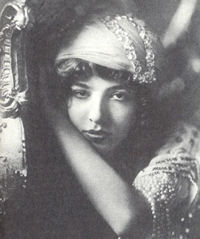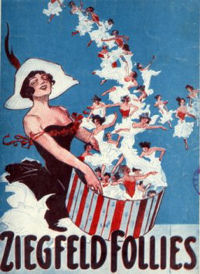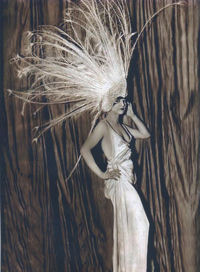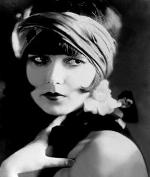The Original Sin City:
1920s Broadway Shows
The Allure of Satan's Circus During the Jazz Age
The history of Broadway has not always been the glittering spectacle as it is known today.
Broadway, as we know it, is the result of nearly 250 years of "variety" performances that have evolved over the years, especially since the 1920s.
In its early years Broadway became well-known as Satan's Circus because of the prostitutes and low-lives that hustled their goods throughout the district.
Known as the "Tenderloin" by brutal police captain, Alexander "Clubber" Williams, Broadway started as a collection of brothels, bars, burlesque and minstrel theaters.
In the late 1800's the Tenderloin went through a reformation and began to show signs of the sex, glitz, grime and glamor still to come.
The Girl in the Red Velvet Swing and the Murder of the Century
Broadway has spawned some pretty sexy love affairs throughout its history.
Chorus girls hooking up with multi-millionaires. This was the case of the newspaper tycoon William Randolph Hearst's affair with showgirl Marion Davies.
Their love affair has been colorfully described as "The # 1 whore of the world's biggest son-of-a-bitch."
Another juicy Broadway hook-up is the famous architect Stanford White's affair with the famous actress Evelyn Nesbit.
 Evelyn Nesbit: The Girl in the Velvet Swing
Evelyn Nesbit: The Girl in the Velvet SwingThis tryst ultimately left White dead by Nesbit's jealous husband, eccentric millionaire Harry Kendall Thaw.
It's said, Nesbit was an early version of a supermodel: more beauty than talent.
Nesbit's story has been retold also in E.L. Doctorow's amazing book, Ragtime, Doctorow calls Nesbit "the first sex goddess in American history." Ragtime was later made into a famous Broadway play in the late 1990s.
Broadway has always been a great breeding ground for beauty and excitement.
In the New York Broadway shows of the 1920s, no one sold more tickets than Florenz "Flo" Ziegfeld, an entrepreneur fond of publicity stunts.
Flo made his name in the Big Apple with the Ziegfeld Follies
Broadway's Endless Hunger For More!
The "Follies" redefined chorus girls on Broadway, promoting them as sexual objects. Yet kept them separated and unattainable from the upscale patrons that frequented the spectacle.
The Ziegfeld Follies were the biggest attraction of the New York Broadway shows, but they were far from the only show in town.
The follies set the stage for bigger and better spectacles in the years to come. Broadway in the 1920s was a time of showmanship, indulgence, and debauchery.
 The Ziegfeld Follies: The Most Popular Show On Broadway
The Ziegfeld Follies: The Most Popular Show On BroadwayJerome Charyn says in Gangsters and Gold Diggers: "Appetite defined the new Broadway--an endless hunger, and almost childlike innocence and cruelty."
Charyn writes this in the context of the famous baseball player, Babe Ruth's impact on the flavor of Broadway in the 1920's, "The twenties crystallized around the Babe."
Ruth ought to have been elected mayor of New York City, he single-handedly got a new venue built for the Yankees and ruled over Broadway like a king.
If you have ever wanted to experience the spectacle of Broadway but couldn't get over the price shock of buying tickets, check out our tips and strategies for getting great seats

